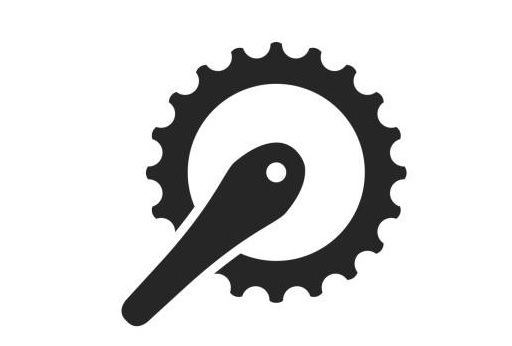Goofn.com – In the vast landscape of technology, certain terms may appear mysterious or unfamiliar to those not deeply entrenched in the field. One such term is “crank,” and its significance can vary depending on the context. In this article, we’ll delve into the multifaceted aspects of what a crank means in technology, exploring its historical roots, diverse applications, and how it continues to influence modern innovation.
1. Historical Context: The Mechanical Crank
The term “crank” has its origins in the mechanical realm, dating back to ancient times. In the simplest terms, a crank is a lever that converts rotational motion into linear motion or vice versa.
Historically, cranks were crucial components in various mechanical devices, serving purposes ranging from milling grain to powering early forms of machinery.
One notable application of cranks is found in the ancient Greek technology known as the Antikythera mechanism, an intricate astronomical calculator believed to have been built around 100 BCE.
This complex device featured gears and cranks, showcasing the early understanding of converting rotational energy into meaningful computations.
2. The Evolution of Cranks in Technology
As technology advanced, so did the applications of cranks. During the Industrial Revolution, cranks became integral to the functioning of steam engines and early forms of machinery.
The transformational power of cranks allowed for the mechanization of various industries, marking a pivotal moment in technological history.
In the realm of transportation, bicycles and early automobiles employed cranks to convert pedaling or engine power into the rotational force needed to drive the wheels.
The crank and connecting rod mechanism in internal combustion engines, for instance, exemplifies the continued reliance on this technology in the automotive industry.
3. Cranks in Modern Devices and Appliances
The legacy of the crank extends beyond historical machinery, finding its place in various modern devices and appliances.
One common example is the hand-cranked flashlight, where users manually rotate a crank to generate electrical power for the built-in light. These devices are often designed for emergency situations, providing a reliable source of illumination without the need for batteries.
Another notable application is in hand-cranked chargers for electronic devices. These portable chargers feature a crank mechanism that, when turned, generates electrical energy to recharge smartphones or other gadgets.
This innovation serves as a sustainable and practical solution, especially in situations where access to conventional power sources is limited.
4. Cranks in Renewable Energy: Wind Turbines
The principles of the crank mechanism also find a home in the realm of renewable energy. Wind turbines, a vital component of modern sustainable power generation, often utilize a crank-like mechanism in their design.
The rotational force generated by the wind’s kinetic energy is converted into electricity through a series of gears and cranks, contributing to the global shift towards cleaner energy sources.
5. Cranks in Robotics: A Contemporary Perspective
In the evolving landscape of robotics, the term “crank” takes on a more nuanced and specialized meaning. In robotics engineering, a crank can refer to a mechanical component that converts rotary motion into linear motion or vice versa.
This application is particularly prevalent in robotic systems where precise and controlled movement is essential.
Robotic arms, for instance, often incorporate crank mechanisms to facilitate the precise positioning of the end effector.
This allows robots to perform intricate tasks with accuracy, making them invaluable in industries such as manufacturing, healthcare, and logistics.
6. The Digital Era: Cranks in Software and User Interfaces
In the digital era, the concept of a crank has transcended the physical realm and entered the domain of software and user interfaces.
The term is sometimes used metaphorically to describe a manual input or control mechanism within a digital system. This could include a manual override feature or a user-controlled element that allows for hands-on interaction in a predominantly digital environment.
7. Challenges and Criticisms: Overcoming Limitations

While cranks have proven their versatility and utility across various technological domains, they are not without challenges and criticisms. In some contexts, the manual effort required to operate a crank may be seen as a limitation, especially as automation and digital solutions continue to advance. Additionally, the wear and tear associated with mechanical components like cranks may pose maintenance challenges over time.
8. Innovations and Future Prospects
Despite challenges, ongoing innovations in materials, manufacturing processes, and digital technologies continue to shape the role of cranks in modern applications.
The integration of smart sensors, precise control systems, and advanced materials has the potential to enhance the efficiency, reliability, and lifespan of crank mechanisms.
As technology continues to evolve, it’s conceivable that cranks will find new and unexpected applications. From innovative medical devices to space exploration equipment, the adaptability of the crank mechanism showcases its resilience and enduring relevance in an ever-changing technological landscape.
Conclusion
In conclusion, the term “crank” in technology has a rich and varied history, ranging from its origins in ancient mechanisms to its contemporary applications in robotics and digital interfaces.
Whether generating electricity in emergency situations, contributing to renewable energy solutions, or facilitating precise movements in robotics, the crank remains a fundamental and adaptable component in the ever-expanding toolkit of technological innovation.
As we look toward the future, the legacy of the crank will likely continue, with ongoing advancements shaping its role in the next chapter of technological evolution.
 www.goofn.com Media Informasi
www.goofn.com Media Informasi



